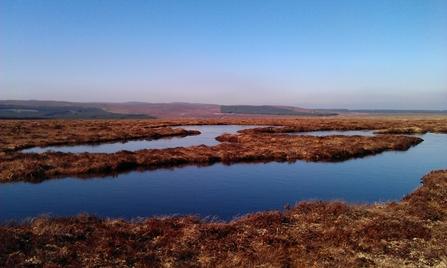For the past two years Pennine PeatLIFE through Yorkshire Peat Partnership (YPP) has been collaborating with Leeds University to develop a User Guide for practitioners interested in evaluating the socio-economic benefits of peatland restoration. The process was supported and funded by the Yorkshire Integrated Catchment Solutions Programme (iCASP) and the guide was completed in 2019. This highly successful collaboration has now led to further support from iCASP to produce a user-friendly, bespoke protocol for one of the methodologies commonly used and deemed most appropriate for assisting the project.
The ‘deliberative monetary valuation method’, involves discussion and learning between participants and generates agreed group-based values of the benefits of an ecosystem. The valuation of this ecosystem is based on a subject’s ‘willingness-to-pay’ for its perceived benefits. As a process, it has the added advantages of an outreach programme, enabling interactive sessions that encourage greater understanding and learning opportunities between the parties.
Pennine PeatLIFE restoration officer, Jenny Sharman, elaborated,
“This was one of the most attractive elements of the methodology to us. It offers a perfect outreach and information gathering tool to help our understanding of the public’s view of peatlands, and provides us with a structured methodology to spread greater awareness of their benefits and ecological role. It’s an exciting and practical combination!”
In order for the collection of data to be scientifically robust, Leeds University designed the protocol that will be used by Pennine PeatLIFE through public workshops. In July, an online workshop (available to watch again here) was held by Leeds for Yorkshire Peat Partnership and North Pennines AONB to train the team in the application of the valuation method.
Professor Julia Martin-Ortega, leading the project for Leeds University explained,
“This protocol has been a natural progress in the work that we have been doing with YPP on the valuation of benefits from peatland restoration. The aim has been to co-produce tools that would enable peatland practitioners across the UK to familiarize themselves and, where possible, robustly apply state of the art methods for estimating the (monetary) value of the ecosystem services delivered by peatlands. Working with YPP has allowed us to tailor make these tools to the user’s need, and move away from overly complicated and jargon-full academic description. We really hope that the protocol and Valuation User Guide are useful step-by-step support that can help peatland restoration planning.”
The team are now very much looking forward to their first workshops.
Outputs will be available from the optimal peatland restoration project resources area of the Resources and Publications section of the iCASP website once they have been completed.

